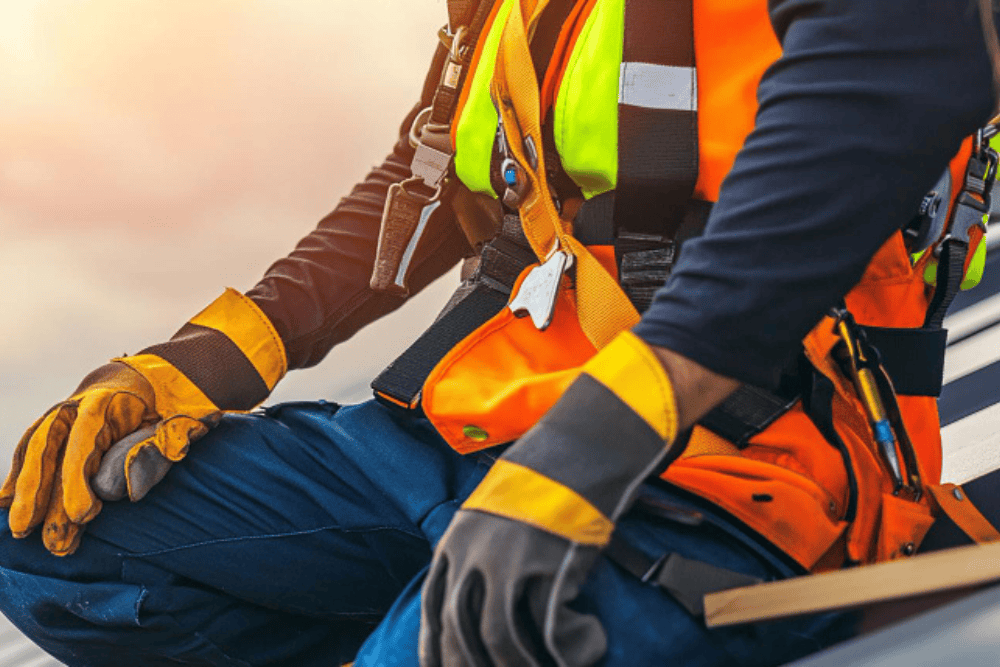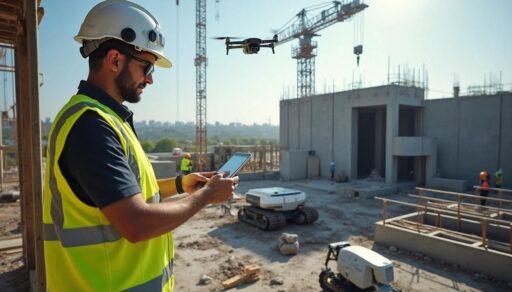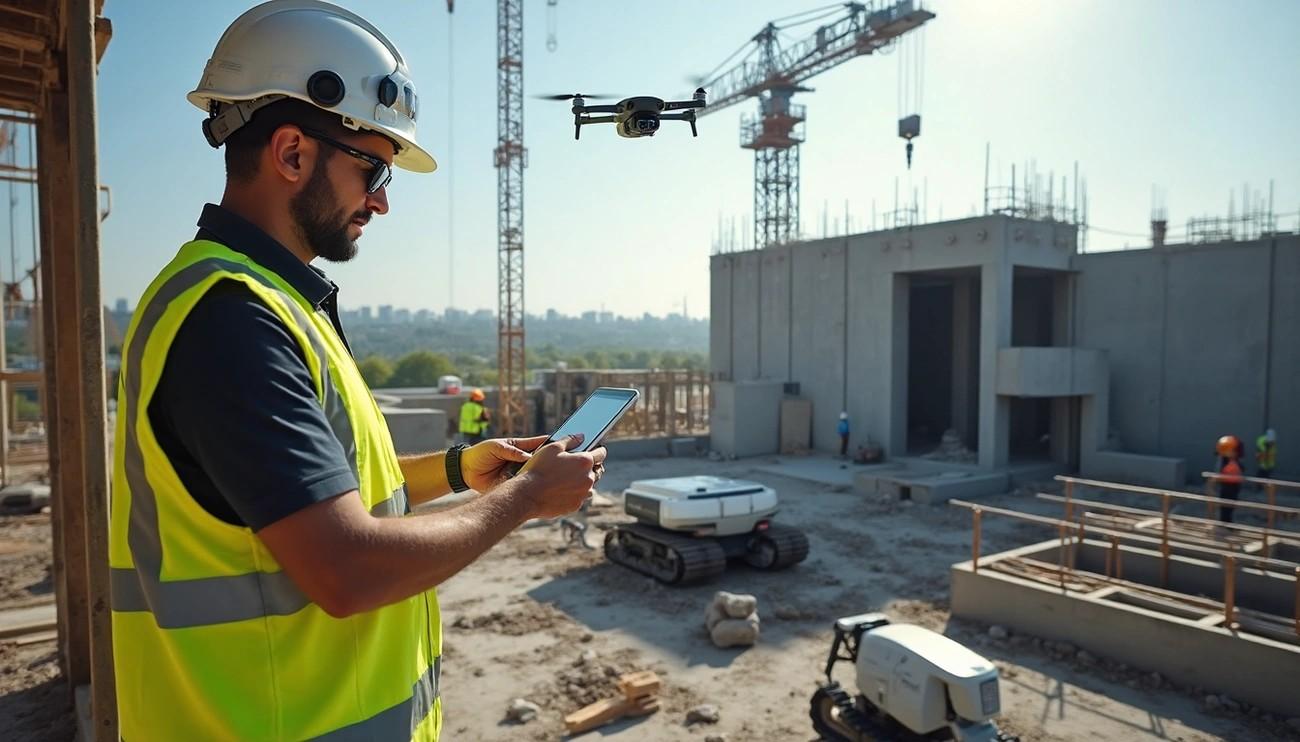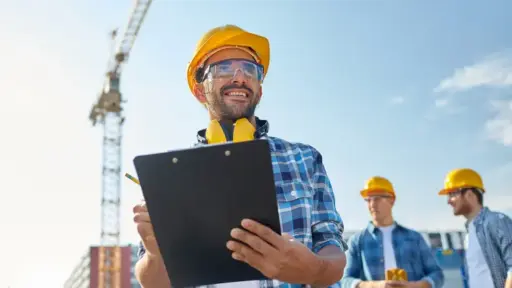The global construction market is projected to grow by $8 trillion by 2030, and technology is playing a central role in driving that expansion. To stay competitive, companies are increasingly adopting advanced digital tools that streamline processes and enhance performance.
The impact of technology in construction is already clear. A recent RICS survey revealed that 34% of firms experienced increased productivity last year.
This article explores the cutting-edge tools and systems that forward-thinking construction teams are using today. By understanding these developments, companies can better plan their projects, improve on-site safety, and embrace more sustainable building practices for long-term success.
The Core Technologies Driving Construction in 2025
As the construction industry continues to evolve, digital innovation is no longer optional — it’s essential. Companies are embracing a new generation of tools that enhance precision, speed up decision-making, and reduce costly delays.
The following advancements reflect a broader shift toward smarter, more connected job sites built on real-time data, automation, and proactive planning.
Building Information Modeling (BIM)
BIM technology has evolved way beyond 3D modeling. BIM will serve as the foundation for construction’s digital transformation by 2025. It creates complete virtual replicas of physical structures. These models incorporate all components and systems. Teams can now detect errors during design instead of construction.
BIM’s integration with AI and machine learning brings new predictive capabilities. A Nordic construction company used an AI-powered BIM system to spot concrete panel defects during manufacturing. This approach cut down expensive rework at construction sites.
Modern BIM systems merge with digital twins—virtual replicas that simulate building behavior. Teams can now plan and troubleshoot before construction starts. Projects crossing international borders will need ISO 19650 BIM standards by 2025.
Project management software and cloud tools
Cloud-based construction management software has become crucial, with 60% of firms upgrading to these solutions. These platforms create a central hub where project teams work together securely and make decisions using up-to-the-minute data.
Advanced project management tools connect with BIM systems. Architects and contractors can access current models and plans. This unified approach reduces inconsistent data that often leads to errors and disputes.
Construction teams using cloud software process RFIs and submittals eight days faster, saving about 15 days per project. About 90% of customers confirm these platforms substantially improve field-to-office communication.
Drones and robotics on the jobsite
The construction robotics market valued at $168.20 million in 2022 will reach $774.60 million by 2032—a 360% jump. Drones are changing how teams survey sites, inspect work, and track progress.
Construction drones with RTK modules map with centimeter-level accuracy. Those equipped with LiDAR or photogrammetry create precise 3D models. Teams can now inspect difficult areas safely, track materials accurately, and document site conditions.
Robotics solutions now handle excavation, transportation, load lifting, concrete work, and demolition. These innovations help address worker shortages affecting 67% of German construction companies.
Smarter Planning and Real-Time Decision Making
Today’s construction leaders face increasing pressure to deliver projects faster, safer, and with greater accuracy. To meet these demands, teams are turning to intelligent systems that improve how decisions are made in the moment and during long-term planning.
With the right tools in place, planning becomes more strategic and execution more precise, setting the stage for consistent and measurable results.
AI and machine learning for predictive scheduling
AI has reshaped construction scheduling from reactive to proactive. AI systems spot patterns in huge amounts of past project data that schedulers might overlook and create more precise timelines. These AI tools suggest how long tasks should take based on past projects, which cuts down the uncertainty that often causes delays.
Construction companies using AI scheduling tools see remarkable results. Some cut project time by 17% and save 14% on labor costs. These systems get better at predicting as projects move forward and learn from fresh data to make better suggestions.
“Rather than replacing human intelligence, AI is intended to work in tandem with it,” notes one industry expert. Experienced schedulers working with machine learning algorithms create realistic timelines. These timelines factor in often missed variables like weather patterns, supply chain problems, and workforce output.
4D simulation for timeline optimization
4D construction simulation adds time to traditional 3D modeling. Teams can see the entire building process before they start work. Contractors spot potential holdups, make better use of resources, and plan site logistics effectively.
Standard 3D models show parts in their final spots, but 4D simulation considers space needs during construction. Teams plan equipment paths, material storage, and worker placement better – things often missed in regular planning.
The benefits reach beyond just seeing the process. Construction teams with 4D simulation make better choices. They test different building scenarios and pick the best approach using data instead of gut feeling.
Digital twins for lifecycle management
Digital twins mark the next step in construction planning. These virtual copies grow and change throughout a project’s life. Smart models connect real and digital worlds by using live data from IoT sensors across building sites.
Project leaders watch progress through digital twins from anywhere. They spot issues that might cause delays or cost overruns early. When AI joins forces with digital twin platforms, it predicts maintenance needs and possible risks.
Construction technology will become more connected as we approach 2025. These linked systems help teams make smarter choices at every project stage. The result isn’t just faster building – it’s smarter building.
Subsurface Safety and Utility Mapping
Construction teams consider underground utility mapping their first line of defense. Workers need to identify buried infrastructure like pipelines, electrical cables, and water lines accurately.
Teams can spot crucial underground elements like overburden thickness, bedrock depth, void locations, and groundwater levels. In fact, this detailed subsurface information reduces project risk and claim costs significantly while making construction safer.
Ground-penetrating radar (GPR) remains one of the best non-destructive tools to explore what’s underground. GPR data interpretation needs experienced personnel, which can get pricey and take time. New machine learning algorithms have solved this challenge.
Modern subsurface systems combine several technologies. They use electromagnetic induction to find metallic objects, acoustic leak detection to spot fluid escapes, and 3D imaging to create detailed views of underground infrastructure. Geographic information systems (GIS) blend this data to build complex databases and maps that show intricate subsurface utility networks.
In regions like the Southwest, underground utility locating services in Arizona play a key role in addressing the complexities of desert terrain and urban development. Local experts such as BloodHound bring specialized knowledge of the region’s subsurface conditions, helping construction teams navigate these challenges with precision.
Boosting Safety and Efficiency with New Tools

As construction sites grow more complex, staying ahead of potential risks while keeping operations efficient has become a top priority. New tools are emerging that not only improve safety standards but also streamline critical tasks and reduce the margin for error.
The following advancements reflect how technology is reshaping what safety and productivity look like on the modern job site.
Wearable safety tech and smart helmets
Smart helmets mark a significant advancement in worker protection. Major contractors helped develop the Armet PRO helmet that uses sensors to measure motion and forces 1,000 times per second. This technology analyzes accidents immediately and sends emergency alerts with location details through the worker’s smartphone.
Smart helmets do more than detect falls. They monitor vital signs to prevent accidents caused by fatigue. Some models come with augmented reality displays that show live data without distracting workers from their tasks.
IoT sensors for environmental monitoring
Connected sensors across construction sites create protective digital networks that watch for hazards continuously. These devices keep track of air quality and dust levels, which helps teams follow regulations like OSHA’s limits on silica dust exposure.
These environmental sensors spot dangerous gasses, extreme temperatures, and equipment problems before workers face any risk. Project managers can respond to site conditions live, often without visiting the location.
Automation for hazardous tasks
Robots now handle dangerous construction tasks, which significantly reduces risk to human workers. The construction robotics sector, which grew significantly in recent months, manages utility excavation, bricklaying, and drywall finishing.
Safe robot-human collaboration requires construction robots to control energy transfer during accidental contact. Organizations like ANSI created safety protocols that include monitored stops and force limiting to protect workers as automation becomes common.
Induction heating for precision repairs
nduction heating technology gives workers safer options than traditional flame or resistive heating methods in construction. The induction equipment creates eddy currents inside components, and heat radiates outward from the center of mass.
This method eliminates many safety risks while offering better precision. The process works on a “fire and forget” principle as thermocouples help maintain desired temperatures and ramp rates automatically. For teams working under tight deadlines, choosing the best induction heating solutions can significantly reduce downtime and improve accuracy.
Providers like Team, Inc. deliver advanced systems tailored for demanding industrial environments, helping workers save up to 50 percent of the time compared to conventional methods. This makes the technology especially valuable for time-sensitive and high-precision tasks.
Sustainability and Innovation in Construction Methods
The construction industry in 2025 looks different as environmental concerns reshape building practices. Companies now embrace green construction technologies that were once experimental. They’ve found ways to cut carbon footprints and improve efficiency at the same time.
3D printing for faster, eco-friendly builds
3D printing has evolved into an effective solution for green construction. This method produces exactly what builders need and creates much less waste than traditional approaches. Research shows that builders can cut material use by 30-60% compared to standard methods.
The numbers tell an impressive story. The global 3D printing construction market is set to grow from $1.40 billion in 2021 to $750.80 billion by 2031. Both environmental benefits and practical advantages drive this remarkable expansion.
3D printed structures excel at energy efficiency. New materials like polymer composite are five times stronger than concrete and weigh 30% less. These materials also work better as insulators, which means lower emissions throughout the building’s life.
Here’s how 3D printing makes construction more sustainable:
- Precise material application creates minimal waste
- Shorter build times mean less energy use
- Material efficiency cuts transportation emissions
- Printing materials can include recycled components
Modular construction and prefabrication
Modular construction takes sustainability further by moving 60-90% of building work to factories. This approach transforms how teams use materials and handle waste.
Prefabrication stops waste before it happens instead of trying to manage it later. Industry studies show this systematic approach can cut material use by up to 90% compared to traditional methods.
Speed matters too. Modular construction saves more than 50% of build time compared to standard methods. This means less energy use, fewer temporary facilities on site, and a smaller environmental footprint.
Factory settings allow for better inventory control, more recycling options, and quality checks that aren’t possible on regular construction sites. A modular high-rise project in Wolverhampton used 824 modules and generated only 5% waste by weight—nowhere near the typical 10-13% from traditional construction. The project also cut on-site deliveries by 70%, which meant fewer transportation emissions.
These state-of-the-art methods give construction teams effective solutions to address environmental concerns while keeping projects on time and within budget.
Building Smarter for a Better Future
As the construction industry accelerates into 2025, it is clear that the most successful teams are those embracing innovation at every level.
Adopting these tools is not just a matter of staying current. It is about leading with intention, reducing waste, improving precision, and protecting workers on the ground. Companies that invest in digital transformation today are setting the foundation for long-term resilience and industry leadership.
Construction has always been about building the future. With the right technology, that future is now being built with more insight, more care, and far greater efficiency than ever before.








